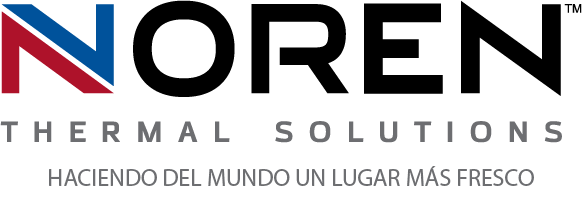 The search for greener, more manageable, and more eco-friendly ways to operate has become an important endeavor for companies in most industries, and for many reasons. On one hand, the general consensus is that companies need to be more responsible with their impacts on the environment and communities in which they’re situated. This means reducing pollution, cutting reliance on non-renewable energies, and implementing greener technological solutions wherever possible. In many cases, that includes revamping electrical thermal management systems with the help of modern, eco-friendly heat exchangers, which help streamline the process of electrical cooling in ways that make green energy efforts much easier.
The search for greener, more manageable, and more eco-friendly ways to operate has become an important endeavor for companies in most industries, and for many reasons. On one hand, the general consensus is that companies need to be more responsible with their impacts on the environment and communities in which they’re situated. This means reducing pollution, cutting reliance on non-renewable energies, and implementing greener technological solutions wherever possible. In many cases, that includes revamping electrical thermal management systems with the help of modern, eco-friendly heat exchangers, which help streamline the process of electrical cooling in ways that make green energy efforts much easier.
Why thermal management isn’t always eco-friendly
Just decades ago, the realm of electrical thermal management was much more of a burden than it is today. That’s because the most common solutions included equipment such as air conditioners and air compressors, which could prove costly and high-maintenance when used to continuously cool electrical enclosures. Because companies had few or no other options for their electrical cooling needs, these burdens were a necessity. However, they also made things like green energy initiatives and energy-conservative operations much more difficult, and sometimes impossible, due to their high-maintenance needs.
The difference that transferring heat makes
When heat exchangers were first introduced, some companies had trouble believing that thermal management could be so simple. After implementing them, however, even the most skeptical companies almost immediately realized the benefits of streamlined electrical cooling. Compared to traditional, more cumbersome solutions, heat exchangers approach the idea of preventing overheating differently. Instead of keeping temperatures within an electrical enclosure controlled through the use of chilled air, heat exchangers instead focus on removing the waste heat within the enclosure before it has a chance to accumulate. This means heat exchangers don’t need the clunky, costly equipment that HVAC and other solutions require.
How heat exchangers contribute to green energy
Transferring heat effectively requires the use of an eco-friendly cooling fluid and an apparatus that provides the path for the fluid to flow (i.e., heat pipes or custom cold plates). They don’t need harmful chemicals, such as Freon and other chlorofluorocarbons, to keep the air chilled, or complicated machinery to circulate the chilled air. In addition to reducing the need for energy, heat exchangers also help companies reduce their reliance on solutions, chemicals, and processes that are proven harmful to the environment.
For more information about the ways heat exchangers help make green energy easier, call Noren Thermal Solutions in Taylor, TX, at 866-936-6736.







